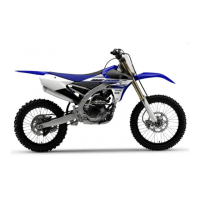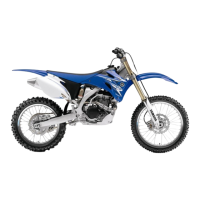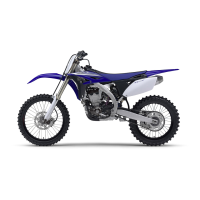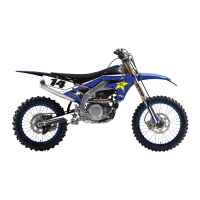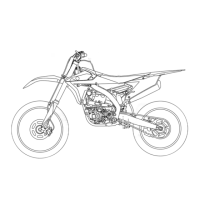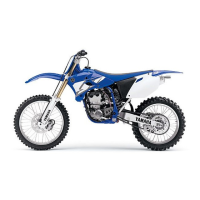CHASSIS
10-3
SETTING OF SPRING AFTER REPLACE-
MENT
As the front fork setting can be easily affected
by the rear suspension, take care so that the
front and the rear are balanced (in position etc.)
when setting the front fork.
1. Use of soft spring
• Change the rebound damping force.
Turn out one or two clicks.
• Change the compression damping force.
Turn in one or two clicks.
Generally a soft spring gives a soft riding feel-
ing. Rebound damping tends to become stron-
ger and the front fork may sink deeply over a
series of gaps.
2. Use of stiff spring
• Change the rebound damping force.
Turn in one or two clicks.
• Change the compression damping force.
Turn out one or two clicks.
Generally a stiff spring gives a stiff riding feel-
ing. Rebound damping tends to become weak-
er, resulting in lack of a sense of contact with
the road surface or in a vibrating handlebar.
EAS1SM1373
FRONT FORK SETTING PARTS
• Front fork spring “1”
*Except for USA and CAN
The I.D. mark (slits) “a” is proved on the end of
the spring.
EAS1SM1374
REAR SUSPENSION SETTING
The rear shock absorber setting should be
made depending on the rider’s feeling of an ac-
tual run and the circuit conditions.
The rear suspension setting includes the fol-
lowing two factors:
1. Setting of spring preload
• Change the set length of the spring.
• Change the spring.
2. Setting of damping force
• Change the rebound damping force.
• Change the compression damping force.
EAS1SM1375
CHOOSING SET LENGTH
1. Place a stand or a block under the engine to
put the rear wheel above the floor, and mea-
sure the length “a” between the rear wheel
axle center and the rear fender holding bolt.
Type
Spring
rate N/
mm
Part number
I.D.
Mark
(slits)
SOFT 4.5 1SL-23141-20 |-||
STD* 4.6
1SM-23141-00 —
1SL-23141-30 |-|||
STD 4.7
1SL-23141-10 —
1SL-23141-40 |-||||
4.8 1SL-23141-50 |-|||||
4.9
1SL-23141-60 ||-||
STIFF 5.0 1SL-23141-70 ||-|||
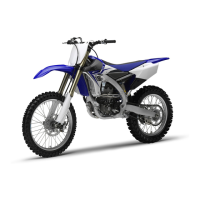
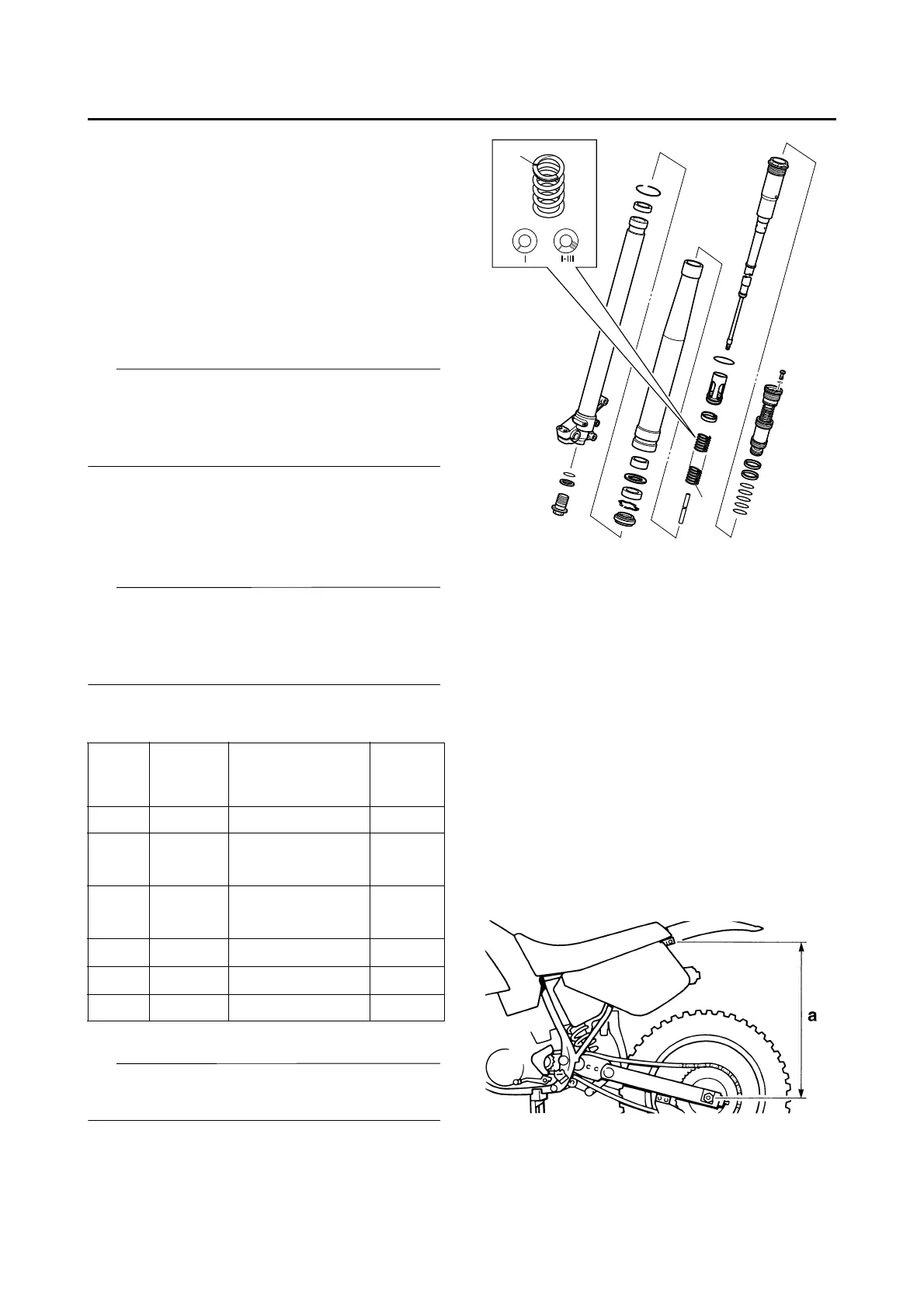